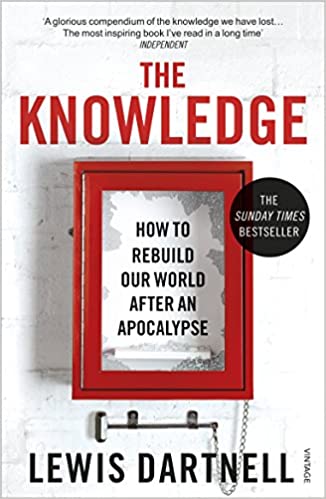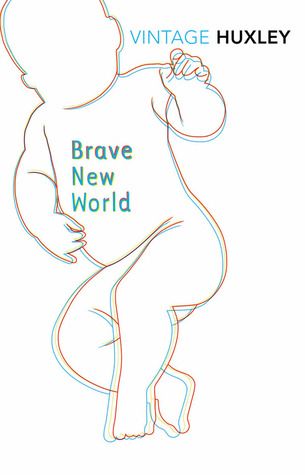Non-fiction books

The Knowledge: How to Rebuild our World after an Apocalypse
When I first picked up post-apocalyptic survival handbook, The Knowledge, little did I know how close to home it would end up hitting in what would prove to be an interesting year. In contrast to books like the SAS Survival Guide, The Knowledge is less about urgent, individual survival techniques, but rather tackles what long-term developments would be necessary to restart civilisation as a whole following some collapse event. It’s a fascinating whirlwind tour of many of the scientific principles, technologies, infrastructure, and logistics that underpin the modern world. Obviously, civilisation did not actually collapse in 2020, but I did think about this book a lot and I feel at least slightly more prepared for such an eventuality!

The Long Way Home
The Long Way Home tells the story of flying boat Pacific Clipper NC-18609 following the attack on Pearl Harbour in December 1941. Her crew suddenly found themselves charged with the safe return, in secrecy, of a valuable wartime asset to the United States from Auckland, New Zealand. However, as their usual return route over the Pacific was now deemed too risky, they were instead forced to make the journey by way of Asia, Africa, and the Atlantic. Led by Captain Robert Ford, the crew successfully made the 20,000 mile trip, arriving in New York on 6th January 1942 to the great surprise of LaGuardia air traffic control. The Long Way Home details the challenges faced on each of the ten legs of the journey, and also provides a fascinating insight into pre-GPS and pre-jet engine flight. Recommended reading for both adventure lovers and aviation geeks alike. A good retelling of the story can also be found on Medium: This Plane Accidentally Flew Around the World.
Fiction books

The Dark Forest trilogy
Fermi Paradox be damned as Cixin Liu paints an unsettling view of intergalactic power dynamics via his allegorical “Dark Forest” theory, after which this trilogy is colloquially known. If you’ve ever wondered why the night sky seems so empty and thought it more than a little suspicious, then this series might be for you. As one of the first works of Chinese science fiction to enter the mainstream of Western audiences, The Dark Forest trilogy is thematically different in many ways from most sci-fi that I, at least, am typically familiar with. Combined with an expansive plot spanning hundreds of years from Cultural Revolution to cosmic war, and its own unique and ingenious sci-fi concepts, its universal popularity is well deserved. My main gripe was that I personally did not enjoy the ending, but the journey to get there was more than worth it.

Everfair
My continued attempt to broaden my sci-fi perspectives led me to Everfair: an ambitious steampunk-slash-alternate-history novel written by African American author Nisi Shawl. Spanning three decades from the late 19th to early 20th centuries, it chronicles the founding of an African nation named Everfair from the ashes of the Belgian Congo and the turmoil as it struggles to find and secure its future in the world. The Afrocentric perspective is extremely refreshing. Events like World War One are depicted as a dispute between European “tribes” in faraway lands. However, considering the length of time that the book covers and its variety of characters, it has a tendency to read as a collection of related short stories. Sometimes huge gaps of time pass in between chapters, sometimes auxiliary plot points happen “off screen”, and sometimes fantastical plot devices appear randomly out of nowhere. This style is memorable and interesting in some ways but occasionally I found myself wishing for a more cohesive narrative.

Brave New World
Many years ago I acquired both Brave New World and 1984 at the same time, a pairing I expect is quite common given the oft-drawn comparisons between the two works. Although I devoured the latter in a day or two, for some reason I really struggled to get into Brave New World even after several attempts. Seeing it on my bookshelf again last year I decided to finally persevere and I’m very glad that I did. I now appreciate more fully why many people claim that Brave New World depicts a more realistic dystopia than 1984. Judging by its social and political commentary, this book could have been written yesterday, and if anything, it feels like the world in the book and the one we’re living in are becoming increasingly similar. If only I understood more of the Shakespeare references without having to look them up!
Technical books

Domain-Driven Design: Tackling Complexity in the Heart of Software
One of my goals for last year was to improve my software design and architecture skills and Domain-Driven Design is widely regarded as a seminal text in this area. It heavily espouses (and has very much reinforced my belief in) agile software development: that effective design only comes about through successive iteration and incorporation of feedback. My other main takeaway from this book is that to build powerful software, we need to gain a deep understanding of the target domain and work closely with domain experts to achieve this. As software developers, we must be comfortable with learning everything we can about the domain we’re working in. A solely technical knowledge base is not sufficient. We can’t just show up, pretend we know everything, and expect to build something useful without going through this collaborative learning and design process first.

Radical Candor
I led a “management skills” reading group at Oxbotica last year and chose Radical Candor for the first couple of sessions. It describes a framework which places interactions with fellow humans along both a “caring personally” axis and a “challenging directly” axis. The stated goal of the book is to encourage you (and your team) to land in the “Radical Candor” quadrant of these axes by getting everyone comfortable with both giving and receiving honest feedback about everything, all the time. That the term “Radical Candor” is very much a marketing invention by the author is highly evident throughout the text, however despite this I felt that the underlying principles and concepts are definitely valuable. I’d probably recommend Radical Candor alongside a more approachable take on the subject such as Julie Zhuo’s The Making of a Manager, particularly for aspiring managers.
Blog posts and articles
A Collection of Unmitigated Pedantry: The Siege of Gondor
Historian Bret Devereaux turns his expertise to analysing the plausibility of the Siege of Gondor from Peter Jackson’s Return of the King. It’s a six-part series that goes deep into many aspects of pre-gunpowder warfare: military logistics, weaponry, tactics, strategy, considerations of the wider society, politics, and economics. If you enjoy LOTR and have any interest in military history then you will find it absolutely fascinating. He doesn’t stop at the Siege of Gondor, either. Other series to be found on his blog include a similar analysis of The Battle of Helm’s Deep1 (wargry!), as well as critiques of Game of Thrones2, and others. It’s all worth checking out.
How Prosperity Transformed the Falklands
What can I say: I have a thing for remote, desolate islands. This long-form piece by The New Yorker tells the story of the Falklands and how its people have adapted from life on the frontier to a more comfortable existence in recent years. Tourism and post-war investment have seen the archipelago’s economy boom, but like everywhere there are those who yearn for the good old days when life was simpler. The article is filled with wonderful accounts and depictions of island life, photos of the stunning terrain, and penguins. It finishes on an uncertain note as the islanders wait to ride out the 2020 coronavirus pandemic which has affected many of their main sources of income.
Nostalgia Reimagined
With people trapped inside for most of last year, it’s only natural that they turn to nostalgia for comfort. Partly to reminisce about good times past, but also as a way of looking forward to the future: seeing friends and family, eating out, travelling. All things that we typically get nostalgic about. However, I’ve also noticed that if I let my imagination get carried away, I can begin to feel nostalgic about events that I’ve never personally experienced. If you’ve ever felt similarly and have wondered way, this essay might be for you. It describes some of the psychology around nostalgia in general, and in particular discusses anemoia, defined in the Dictionary of Obscure Sorrows as “nostalgia for a time you’ve never known”3. I was pleased to be able to put a name to the phenomenon and am glad to know I’m not the only one!
The Sixth Stage of Grief is Retro-computing
A quirky and heartfelt story about the loss of a childhood mentor and the nostalgia of old technology. This link is explored and interleaved with historical anecdotes of 80s and 90 computing. It resonates quite deeply with me. We spend so much of our time and energy connecting with ourselves and with other people through the technology that we use. Behind their screens are worlds to us, and so it shouldn’t be surprising that we would experience nostalgia for these worlds when they are are no longer accessible to us. As in the beginning of the piece, firing up an emulator is one way of revisiting them.
Old CSS, new CSS
Another on the theme of tech nostalgia, Eevee’s article takes us on an amusing (and sweary!) journey through the history of web design and the evolution of web browsers. It has lots of examples and trivia and will probably appeal best if you already have a working knowledge of CSS and web technologies.
Reverse Engineering the source code of the BioNTech/Pfizer SARS-CoV-2 Vaccine
If you were on the internet when this article was first published late last year, you’ve almost certainly already seen it. It’s difficult for me to overstate how spellbound I was by how clearly it draws parallels between silicon-based computers and the biological machines that we are. I’m truly astounded that we can look at, and understand, the “source code” of a virus, and step through it “instruction” by “instruction” to see what it does. The similarities with “hacking” are also simply amazing. It’s mindboggling to me that somebody discovered it’s possible to replace the U nucleobase in some RNA with a slightly modified molecule to trick our immune system into trusting it. That’s an antivirus exploit if ever I’ve seen one. I’m in even more awe of the people who develop vaccines than I was before reading this. I could gush more about this article but it’s probably easier if you just read it yourself.
Becoming a high performing software developer working from your bedroom and
Work on what matters
Since full-time remote working kicked in last year, I’ve been looking for ways to improve how I work remotely and ways to keep myself productive. I’m generally wary about consuming too much self-improvement/self-help material as I feel it can become its own form of attention sink. That said, it is good to occasionally reflect on what you could be doing better, and to get perspectives about what works for other people. These two articles are representative of such a genre and I feel it has been overall beneficial for me to read, reflect on, and action some of this kind of advice. Workspace and environmental improvements like investing in a whiteboard, external monitor, and KVM switch have really helped to reduce physical productivity barriers. Behavioural improvements like prioritising important tasks over urgent tasks, making the effort to finish things, and avoiding “snacking” have also been very effective in preserving my mental energy throughout lockdown. If I hadn’t put in this effort, I’m certain I would have struggled a lot more than I did in 2020.
Your time estimate is a joke
I’m very bad at software development time estimation. This article hasn’t directly solved my problem, but it has given me some comfort in the fact that I’m not alone. It also clarified some of the difficulties I have, particularly when I attempt to overcompensate: at such a point I’m really just estimating chaos, which is by definition unpredictable. It concludes with advice to make your time estimate as informed as possible, to estimate a time range instead of a single point in time (which inevitably becomes the deadline), and to continually refine your estimate as you make progress. This sounds pleasantly agile and I aim to put it into practice this coming year.
An app can be a home-cooked meal
A very sweet post reminding us that we don’t have to have such high aspirations for everything we build. It doesn’t always have to make a profit, it doesn’t always have to be scalable, it doesn’t always have to have a steep user growth trajectory. Sometimes the thing that we build brings joy or pleasure to us, and the people we care about, and that is its own kind of success.